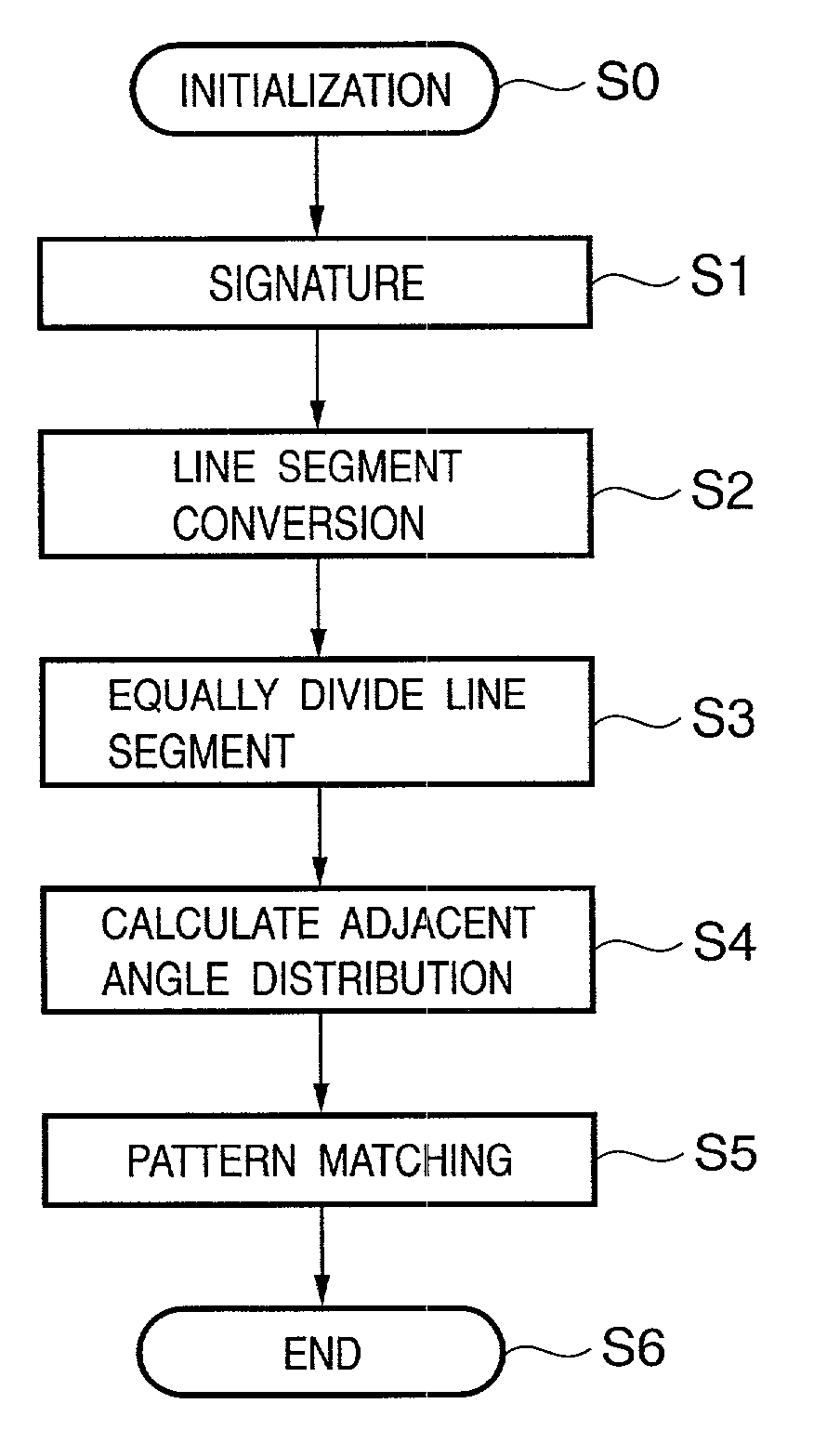Information processing method and apparatus
a technology of information processing and information processing method, applied in the field of information processing apparatus and method, can solve the problems of limiting the recognition method of handwritten characters as normal characters, affecting verification, and definitions not giving correct information, so as to reduce the influence of discretization errors and accurate pattern matching of handwritten inputs
- Summary
- Abstract
- Description
- Claims
- Application Information
AI Technical Summary
Benefits of technology
Problems solved by technology
Method used
Image
Examples
first embodiment
[0072]An outline of the process of the first embodiment will be explained first. In this embodiment, a signature verification apparatus and method, which verify a signature by extracting a geometric feature of an input signature pattern, converting the feature into numerical value data, and comparing the numerical value data with a standard numerical value sequence prepared in advance will be described.
[0073]FIG. 1 shows an example of dot sequences after a handwritten signature to be processed in this embodiment is converted into digital data by a digitizer. As shown in FIG. 1, the digitizer converts a signature written using a thin pen into N dot sequences A={(x[i], y[i])|i=1, . . . , N} in a two-dimensional integer lattice.
[0074]Data used are captured at very small time intervals. At average intervals, two neighboring dot sequences are captured as a figure. In this case, some dot sequences may overlap at a single pixel position when the capture speed is low.
[0075]Furthermore, even...
second embodiment
[0129]Detection of portions with large fluctuation in the second embodiment will be described below.
[0130]FIG. 12A is a flow chart for explaining the registration sequence of a standard pattern (standard signature adjacent angle distribution) and portions (portions with large fluctuation) to be removed upon matching. Note that the processes in steps S0 to S4 are the same as those in the first embodiment (FIG. 7A), and a description thereof will be omitted.
[0131]As described above, with the processes in steps S0 to S4, input data of the written signature input to generate a standard pattern is converted into line segments, which are equally divided to obtain an adjacent angle distribution φ[i].
[0132]The aforementioned processes are repeated L times (about 10 times in this example) to acquire L distributions φ[i], which are held as the standard adjacent angle distribution in the storage device in the verification apparatus, or an IC card or an external storage device connected via the...
PUM
 Login to View More
Login to View More Abstract
Description
Claims
Application Information
 Login to View More
Login to View More - R&D
- Intellectual Property
- Life Sciences
- Materials
- Tech Scout
- Unparalleled Data Quality
- Higher Quality Content
- 60% Fewer Hallucinations
Browse by: Latest US Patents, China's latest patents, Technical Efficacy Thesaurus, Application Domain, Technology Topic, Popular Technical Reports.
© 2025 PatSnap. All rights reserved.Legal|Privacy policy|Modern Slavery Act Transparency Statement|Sitemap|About US| Contact US: help@patsnap.com



